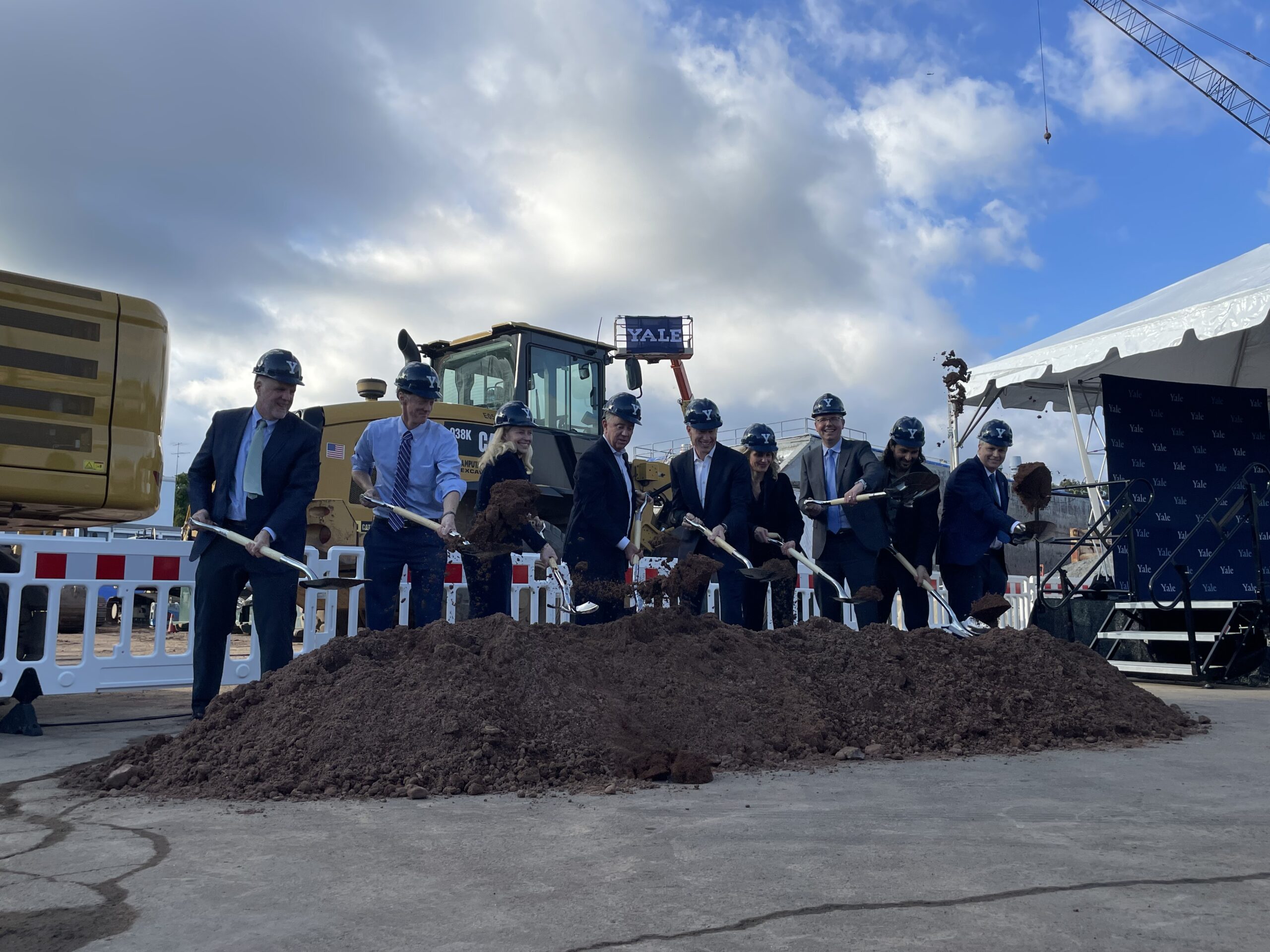Our Terms & Conditions | Our Privacy Policy
Groundbreaking of Yale’s Upper Science Hill Building Complex
Monday’s Ceremony starts a six year effort for a building to house quantum and instrumentation innovation on campus.
Julia Levy
10:50 pm, Sep 30, 2024
Staff Reporter

Julia Levy, Contributing Photographer
On Monday at 4 p.m., members of the Yale community celebrated the groundbreaking of Yale’s Upper Science Hill Building Complex, which University President Maurie McInnis has hailed as the “Grand Jewel of Science Hill.”
The building, approximately equal in size to the Yale Bowl, will mostly serve as space for high-performance quantum research laboratories.
“[The Building] is fundamental to accelerate science and engineering at Yale,” McInnis said in her speech.
Quantum computing machines work to solve problems that modern classical computers cannot solve in optimized runtimes. Such machines capitalize on the properties of superposition of a quantum object, referred to as a qubit. A qubit uses a property called entanglement to maximize the probability of reaching the correct answer in a quantum algorithm.
Also in attendance at the groundbreaking were Gov. Ned Lamont, Provost Scott Strobel and New Haven Mayor Justin Elicker.
Strobel reflected on the process of planning the building, specifically his decision to dedicate the building to supporting initiatives in quantum science, engineering and materials.
“If we could only build one building, it must be a building to propel sciences into the future,” Strobel said to the audience.
Elicker expressed excitement for the innovative potential brought by the building.
“[This building] will change the trajectory of our world and challenges we are facing around the globe,” Elicker said.
Francisco Matute, a visiting fourth year doctoral student at the event studying quantum circuits, noted that quantum machines have limitations. Quantum computing developments do not match the current rapid growth of artificial intelligence. AI is able to reach a broader range of disciplines and with less rigorous implementations.
“[The building] is high risk, high reward,” Matute said.
The building is scheduled to be completed in 2030.
JULIA LEVY
Julia Levy covers Computer Science, Physics, Astronomy, and Earth & Planetary Sciences stories. She is a senior in Pauli Murray College majoring in Computer Science & Astrophysics.
Images are for reference only.Images and contents gathered automatic from google or 3rd party sources.All rights on the images and contents are with their legal original owners.



Comments are closed.